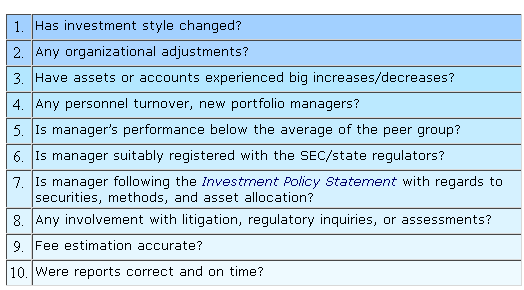Performance Attribution or Investment Performance Attribution is a set of techniques that analysts use to explain the reasons for a portfolio''s performance as compared to its benchmark. This difference between the portfolio return and the benchmark return is known as the active return. The active return is the component of a portfolio's performance that arises from the fact that the portfolio is actively managed.
Different kinds of performance attribution provide different ways of explaining the active return.
Attribution analysis attempts to distinguish which of the two factors of portfolio performance, superior stock selection or superior market timing, is the main source of the portfolio’s overall performance. Specifically, this method compares the total return of the manager’s actual investment holdings with the return for a predetermined benchmark portfolio and decomposes the difference into a selection effect and an allocation effect.
Under the most common paradigm for performance attribution, there are two different kinds of decision that the portfolio manager can make in an attempt to produce added value:
- Asset Allocation: the manager might choose to allocate 90% of the assets into equities (leaving only 10% for other asset classes), on the belief that equities will produce a higher return than bonds or other asset classes.
- Securities Selection: Especially within the equities sector, the manager may try to hold securities that will give a higher return than the overall benchmark. For example, the securities selected by an equities manager may produce an overall return of 5%, when the benchmark return for equities was only 3%.
Performance Evaluation and Manager Selection:
StateTrust reviews the performance and track record of investment managers when selecting them for a client's portfolio and on a periodic basis:
- Examination of the existing macroeconomic climate plus returns on asset classes and subclasses (estimates from indexes, style managers).
- Investment Policy Statement guidelines for selection.
- Strategic plans of each money manager/mutual fund.
- Matches money manager/mutual fund performance with that of other managers using the same strategy plus portfolio features in order to ascertain:
- That the manager is still within a certain peer class.
- Attribution of performance differences and if a manager's performance has shifted away (up or down) from the peer group.
Terminating Money Managers:
The following questions are critical in determining whether to continue with a money manager or to select a different manager from our database of investment managers:

Three different review standards have made it much simpler to evaluate how money managers are doing. First, the Association for Investment Management & Research (AIMR) created a uniform reporting system (in effect January 1, 1993). The Investment Management Consultants Association (IMCA) expanded on this system and also adjusted specific elements so that they matched investment consulting methods. Finally, the SEC set forth guidelines that govern advertising plus reports on performance outcomes.
Standards: Association for Investment Management & Research (AIMR) Managers must follow these guidelines for performance reports:
- Estimating a composite return figure for discretionary portfolios that pay fees, represent a certain asset class, or similar plan.
- Company composites should only include real managed assets.
- Results should be weighted by asset.
- Results should be presented by asset class and show cash equivalents or other securities held instead of an asset class.
- Retroactive compliance should occur at least over 10 years.
- Before any fees are charged, results should be shown.
- Amount of portfolios in the composite should be listed with assets plus composite assets as a percentage of company assets.
- Complete return should include accrued income and capital appreciation (Portfolios should be assessed on a quarterly basis)
- Composite results should utilize external risk measurements (alpha, beta, standard deviation)
- Internal risk measurement (dispersion) between specific accounts should be made available.
Substantiating composite results and numbers related to performance is also encouraged:
- Level I Verification: Certifies that at least one composite features a company's real, discretionary, fee-paying portfolios. The connection of performance numbers, amount of clients, assets' size, typical return deviation, and results' distribution are all closely examined.
- Level II Verification: The favored verification method, Level II features analyses of the investment management process and performance measurement. The evaluation consists of price substantiation, income stream tests, re-estimation of performance numbers, and a third-party audit that confirms compliance.